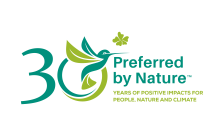Timber Risk Score: 8 / 100 in 2017. The Timber Legality Risk Assessment contains an evaluation of the risk of illegality in Ecuador for five categories and 21 sub-categories of law. We found:
- Specified risk for 18 sub-categories.
- Low risk for 1 sub-categories.
- No legal requirements for 2 sub-categories.
This page provides an overview of the legality risks related to timber produced in Ecuador.
Ecuador has approximately 12.5 million hectares of forest, which cover just over 50% of the country (FAO, 2015). Outside of the Galapagos islands, this is distributed among:
- Amazon plain (62%)
- Coastal region (17%)
- Andean mountain range (21%).
Ecuador has been reported to have one of the highest deforestation rates in Latin America during the last 20 years, with annual rates of 1.5% and 1.8% for the 1990–2000 and 2001–2010 periods, respectively (FAO, 2011).
Historic estimates of the level of illegal logging in Ecuador have also been very high. Two separate studies have estimated illegal logging to affect 70% of the timber harvested in Ecuador (Seneca Creek Associates and Wood Resources International, 2004 & World Bank, 2006).
Several legality risks are present in Ecuadorian timber supply chains. The risks are wide ranging and relate to legal rights to harvest, taxes and fees, timber harvesting activities, third parties’ rights, and trade and transport. Companies sourcing timber from Ecuador should take care to ensure the extensive risks identified are not present in their supply chains, or have been sufficiently mitigated.
Log export ban: Round log exports are prohibited except when timber is for scientific/experimental purposes with prior-authorisation from the Ministry of Environment.
Trade restriction: Semi-finished forest products exports are allowed only when domestic needs and the minimum levels of industrialisation have been met.
There are currently no armed conflicts in Ecuador according to the Council on Foreign Relations' Global Conflict Tracker.
FSC Certified Forest Area: 59415 hectares (4 December 2019).
PEFC Certified Forest Area: 5,709,026 hectares (31 December 2019).
Information Gathering
Timber sources
- Find out the different sources of legal timber
- Determine which source type your timber comes from
| Timber source type | Description of source type |
|---|---|
|
Timber from natural forests |
Timber from natural forest, that can be privately-owned or state-owned. There are also natural forests whose ownership is not known. A Sustainable Management Plan, Simplified Management Plan, Legal Conversion Program, A Harvesting License is issued is required. |
|
Timber from plantation forests |
Timber from private plantations with permanent production of exotic or native species. There is only one model for legalising forest harvesting, called “Harvesting program for trees of commercial forest plantations”. |
Risk Assessment
Risk assessment summary
|
Legal rights to harvest |
|
|
Taxes and fees
|
|
|
Timber harvesting activities |
|
|
Third parties' rights
|
|
|
Trade and transport
|
|
Risk Mitigation
Mitigate the risks in your supply chain
Learn which actions we recommended to mitigate the risks associated with the timber sources from Ecuador.
Source Certified Materials
NEPCon believes that third party certification (for example FSC and PEFC certification) can provide strong assurances of the legality of the products they cover. Companies seeking to mitigate the risks of sourcing illegal timber should seek to purchase third party certified materials wherever possible.
While the European Timber Regulation does not include an automatic “green lane” for certified products, it does recognise the value of certification as a tool for risk assessment and mitigation. The European Commission says that companies “may rate credibly certified products as having negligible risk of being illegal, i.e. suitable for placing on the market with no further risk mitigation measures, provided that the rest of the information gathered and the replies to the risk assessment questions do not contradict such a conclusion.”
For more information on using certified materials in your due diligence, including how to assess whether a certification system meets EUTR requirements, see the page on Certification and Due Diligence.
Mitigation recommendations
There are five recommended actions to mitigate the risks associated with the timber sources from Ecuador.
1. Fully map your supply chain
- Our supply chain mapping tool can help you do this.
2. Obtain and verify documents
- Forest level documents
- Registry of the Property to verify the land tenure status and use
- Harvesting plan approved and integrated management plan
- Conformance certificates with forest responsibilities exist
- Valid harvesting licenses exist
- Operative maps established that identify and define the environmentally relevant sites
- Forest Superintendent reports about the management of the forest operation evaluated
- Tax related documents
- Certificate of payment of property taxes
- Receipts for payments of harvesting related royalties, taxes, harvesting fees and other charges
- Sales documentation complying with SRI requirements, invoices issued for purchase/sale
- Volumes, species and qualities in the transport documents match the Management Plans and corresponding invoices
- Certificates or payment receipts for fees requested by the authorities
- Trade and transport related documents
- Reports requested according to Ministerial Agreement 049 – and are verified via on-site inspection if necessary
- Volume, species and amounts classified according to legal requirements. Their status shall be verified in SAF and SPF systems
- Import and export permits
3. Consult stakeholders
- Stakeholders, including local authorities, confirm if there are conflicting claims regarding the land use of a forest area. Where applicable, the creation of a map of the traditional communities close to the forest areas may help to identify possible land use conflicts (according to the size and resources of the company)
- Communities and other stakeholders confirm the state and process of information received in relation to FME and harvesting activities
- Authorities confirm the operative status of the Forest Superintendent (Relevant authority (MAE))
- Authorities confirm whether any sanctions have been issued against the forestry company
- Authorities confirm that the operation is up to date with tax payment, including RUC, IVA and ICE tax return, income tax payment. Online publicly-available databases, held by SRI, MAE, MAGAP, can be used
- Staff or workers confirm that protection equipment is provided and used.
- Staff or workers confirm that staff are trained in relation to work-related health and safety
4. Carry out on-site verification
- Confirm that geographic position data agrees with reality and matches the properties approved for harvesting.
- Confirm that the information about the zone, species, volumes, and other information submitted in the licenses is correct
- Confirm that harvesting does not take place in prohibited areas
- Confirm that protected tree species within the FMU are listed in operational plans and marked in the field
- Confirm that species of trees found in forest areas and plantations comply with technical requirements (size limitations etc...)
- Confirm that endangered or threatened species are managed and protected within the forest management units in accordance with requirements
- Confirm that requirements for environmental monitoring are observed
- Confirm that regulations regarding work-related health and safety, minimum age are respected
5. Conduct targeted timber testing
- Conduct timber testing on samples of purchasd material to verify the species or origin of timber, where appropriate














